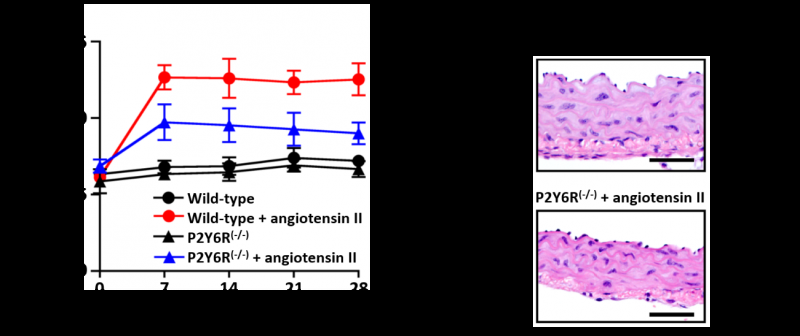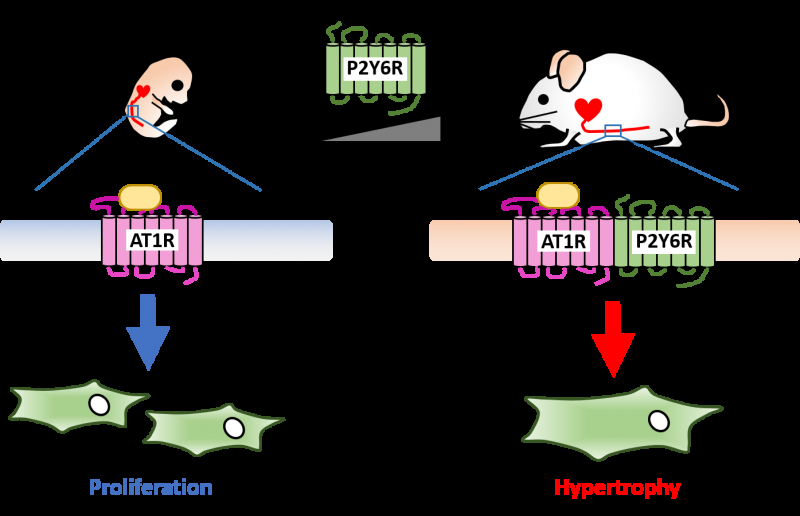The age-related change of angiotensin receptor promotes hypertension

Hypertension is a major risk factor of various diseases including stroke, heart failure, vascular disease, and kidney disease. Angiotensin II, which is produced by the renin-angiotensin system, primarily functions as a physiological regulator of blood pressure and cardiovascular homeostasis, but it also plays a major role in the pathogenesis of hypertension. In the aorta, angiotensin II promotes hypertrophy of vascular smooth muscle cells through angiotensin type 1 receptor (AT1R), resulting in hypertension by increasing arterial wall thickness and vascular resistance. Additionally, angiotensin II induces physiological proliferation of neonatal but not adult vascular smooth muscle cells. How vascular smooth muscle cells determine the responsiveness to angiotensin II under different developmental conditions is mostly unclear.
The Japanese research team, led by Professor Motohiro Nishida of National Institute for Physiological Sciences (NIPS), National Institutes of Natural Sciences (NINS), found that the purinergic P2Y6 receptor (P2Y6R) promoted angiotensin II-induced hypertension in mice. Mice with a deletion of P2Y6R attenuated an angiotensin II-induced increase in blood pressure and medial hypertrophy (Image 1). AT1R and P2Y6R formed stable heterodimers. P2Y6R antagonist MRS2578 disrupted heterodimer formation of AT1R and P2Y6R, and suppressed angiotensin II-induced hypertension in mice.
Furthermore, P2Y6R abundance was developmentally increased in vascular smooth muscle cells. The increased abundance of P2Y6R converted AT1R-stimulated signaling in vascular smooth muscle cells from proliferation to hypertrophy (Image 2). These results suggest that increased formation of AT1R-P2Y6R heterodimers with age may increase the likelihood of hypertension induced by angiotensin II.

undefined
















